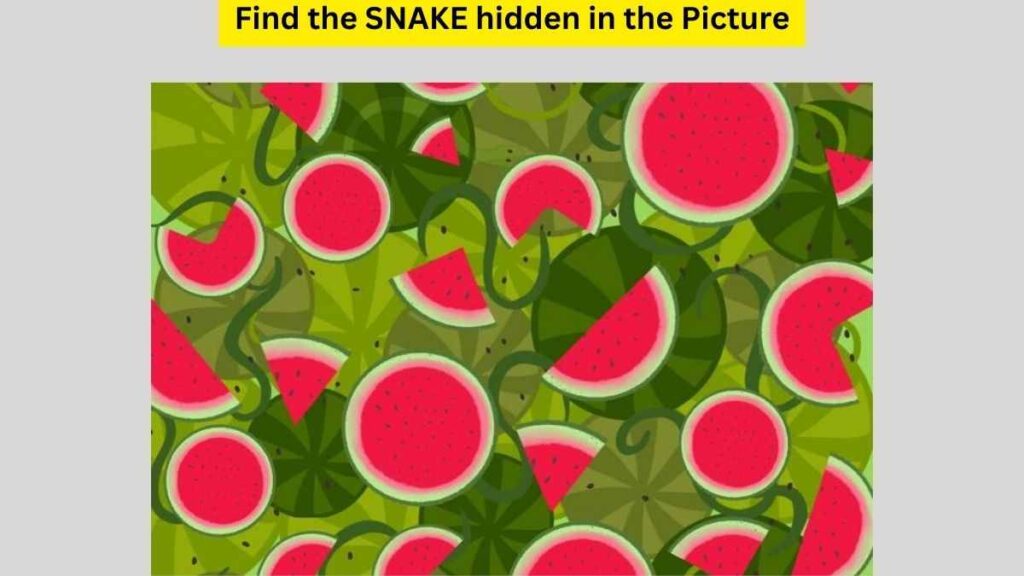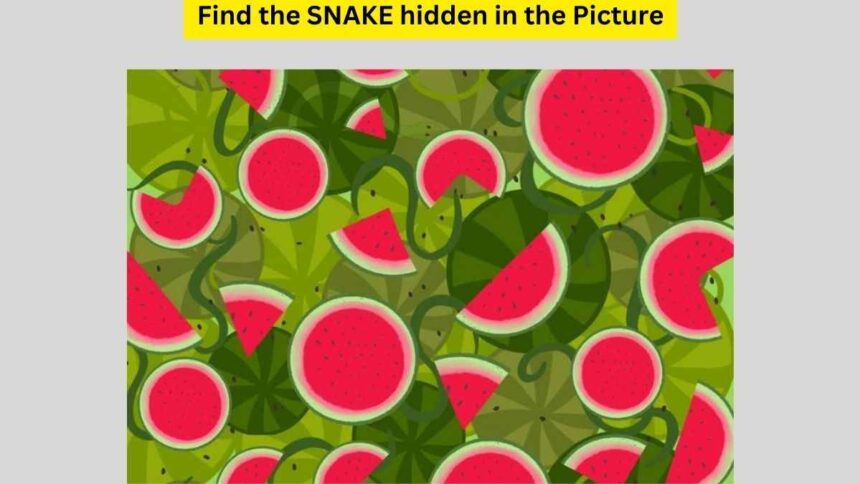Optical illusions have long captivated human fascination, often playing tricks on our minds and challenging our perception of reality.
Among the plethora of optical illusions that exist, one particularly intriguing example is the illusion of finding a snake hidden within a watermelon.
This illusion not only tests our visual acuity but also sparks curiosity about the mechanisms behind such phenomena.
In recent times, technological advancements have enabled the exploration of optical illusions in unprecedented ways.
One such advancement is the utilization of super sonic vision, a cutting-edge imaging technique that surpasses the limitations of conventional vision.
In this article, we delve into the intricacies of the optical illusion involving a snake concealed within a watermelon and explore how super sonic vision unveils this hidden reality, all within a mere 21 seconds.
Understanding Optical Illusions:

Before delving into the specifics of the snake in the watermelon illusion, it’s crucial to grasp the fundamentals of optical illusions.
These phenomena occur when our brain misinterprets visual information, leading us to perceive something that does not correspond with reality.
Optical illusions exploit the complexities of human perception, often relying on factors such as contrast, perspective, and cognitive biases to create compelling visual distortions.
The Snake in the Watermelon Illusion:
The snake in the watermelon illusion is a classic example of how our minds can be deceived by visual stimuli.
At first glance, the image appears to depict a simple watermelon cut in half.
However, upon closer inspection, viewers are challenged to identify the hidden element—a snake camouflaged within the intricate patterns of the watermelon’s flesh.
This illusion relies on several factors to deceive the observer.
The texture and coloration of the watermelon’s interior closely resemble the patterns found on a snake’s skin, making it difficult to distinguish between the two.
Additionally, the curvature of the watermelon’s flesh can create optical effects that further obscure the snake’s presence, leading viewers to overlook its hidden form.
Super Sonic Vision: Unveiling the Hidden Reality
Super sonic vision represents a revolutionary approach to imaging that surpasses the limitations of human sight.
Developed through a combination of advanced optics, computational algorithms, and artificial intelligence, super sonic vision enables the rapid capture and analysis of visual data with unprecedented clarity and precision.
In the context of the snake in the watermelon illusion, super sonic vision offers a powerful tool for uncovering the hidden truth.
By enhancing contrast, magnifying details, and eliminating visual noise, super sonic vision penetrates the illusionary veil and reveals the snake’s presence with startling clarity.
What may have been imperceptible to the naked eye becomes glaringly obvious when viewed through the lens of super sonic vision.
The 21-Second Challenge:
The challenge of finding the snake in the watermelon using super sonic vision adds an element of urgency and excitement to the exploration of this optical illusion.
With a mere 21 seconds allotted for the task, participants must rely on their ability to quickly process visual information and discern the snake’s location amidst the intricate patterns of the watermelon.
As the countdown begins, participants activate the super sonic vision technology, which instantly enhances the image of the watermelon and exposes the hidden snake.
With each passing second, the tension mounts as participants race against the clock to locate the elusive serpent before time runs out.
Implications and Applications:
Beyond serving as a captivating puzzle, the snake in the watermelon illusion and the use of super sonic vision have broader implications and applications across various fields.
In the realm of psychology, studying optical illusions offers valuable insights into the mechanisms of human perception and cognition.
By understanding how and why our brains are susceptible to visual trickery, researchers can gain deeper insights into the complexities of the human mind.
From a technological standpoint, the development of super sonic vision represents a significant advancement in imaging technology.
By harnessing the power of artificial intelligence and computational imaging, super sonic vision opens up new possibilities for medical diagnostics, scientific research, and industrial applications.
From detecting minute defects in manufactured products to aiding in the early detection of diseases, the potential applications of super sonic vision are vast and far-reaching.
Conclusion:
The snake in the watermelon illusion serves as a compelling reminder of the intricacies of human perception and the power of optical illusions to deceive our senses.
Through the lens of super sonic vision, we can pierce through the veil of illusion and uncover hidden truths that elude the naked eye.
As technology continues to evolve and our understanding of optical illusions deepens, we are poised to unlock new realms of discovery and exploration, reshaping our perception of the world around us in the process.

